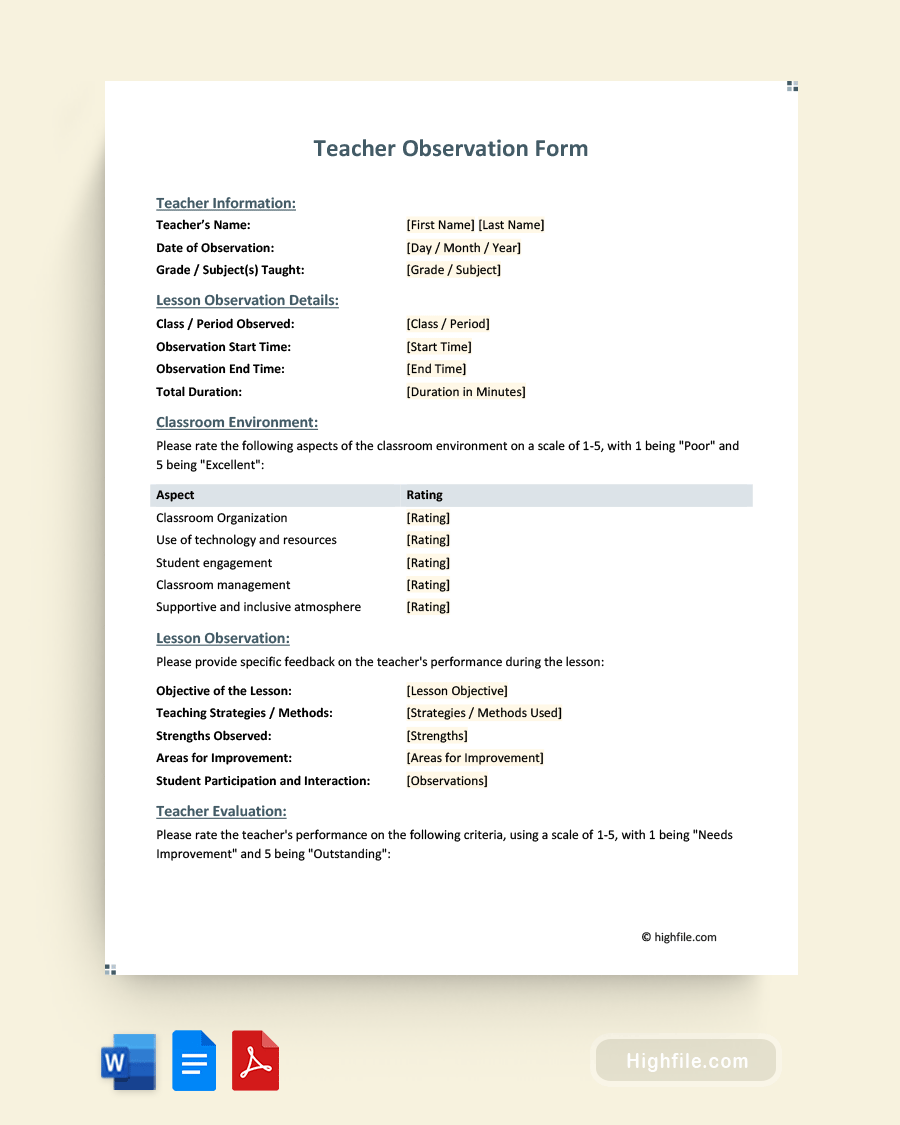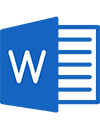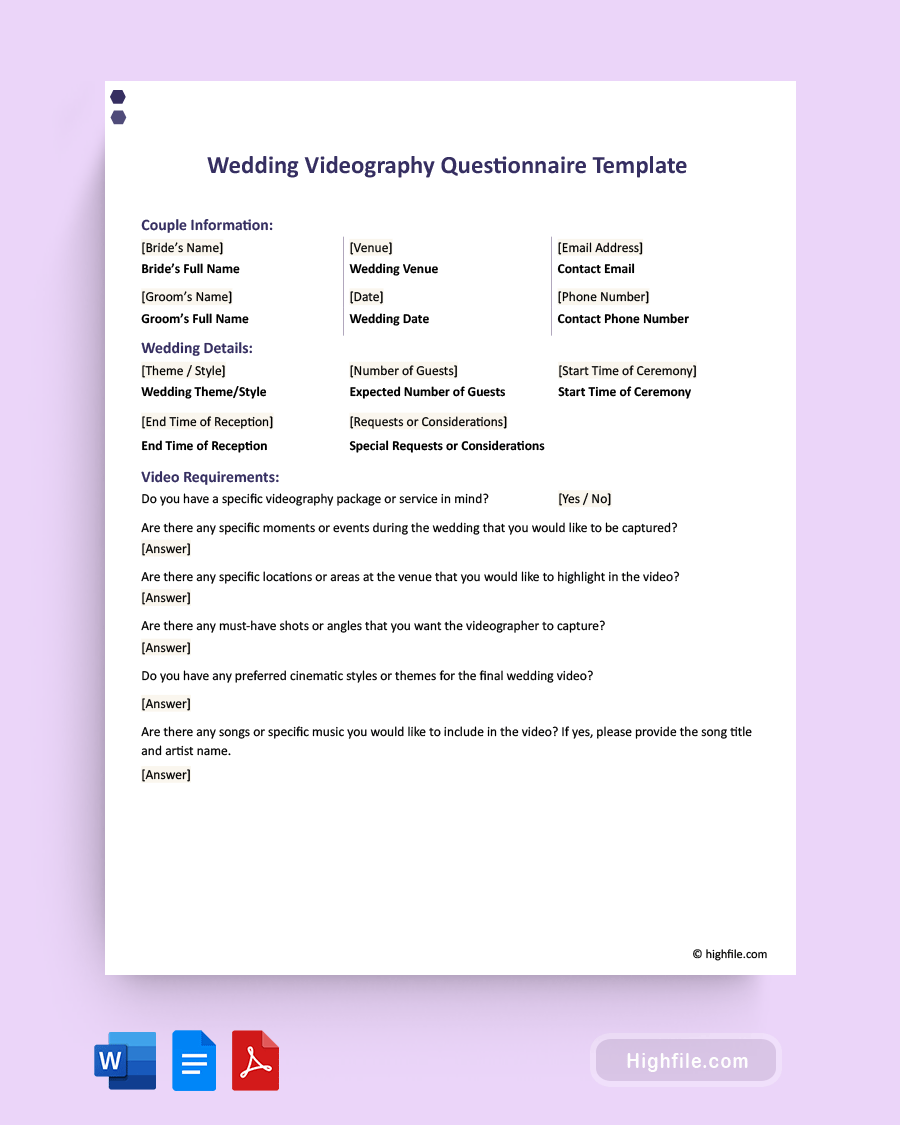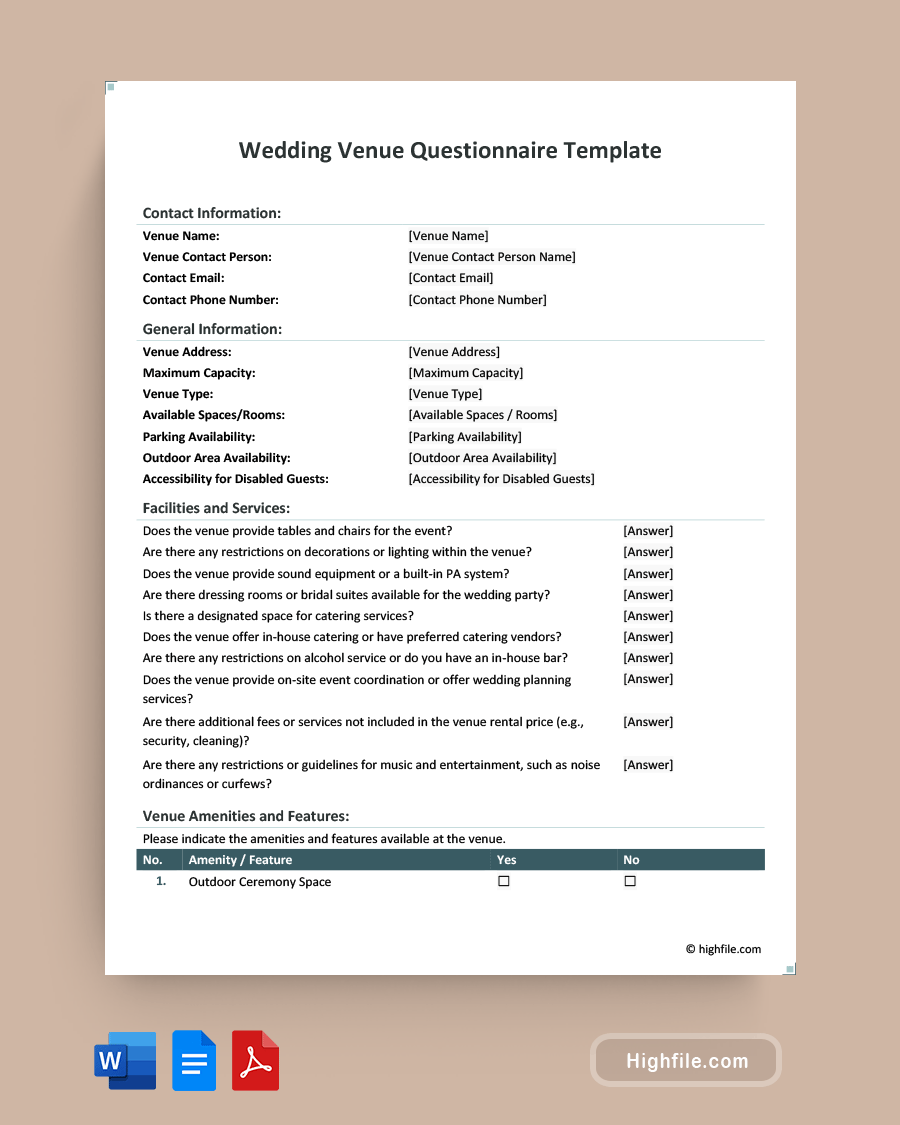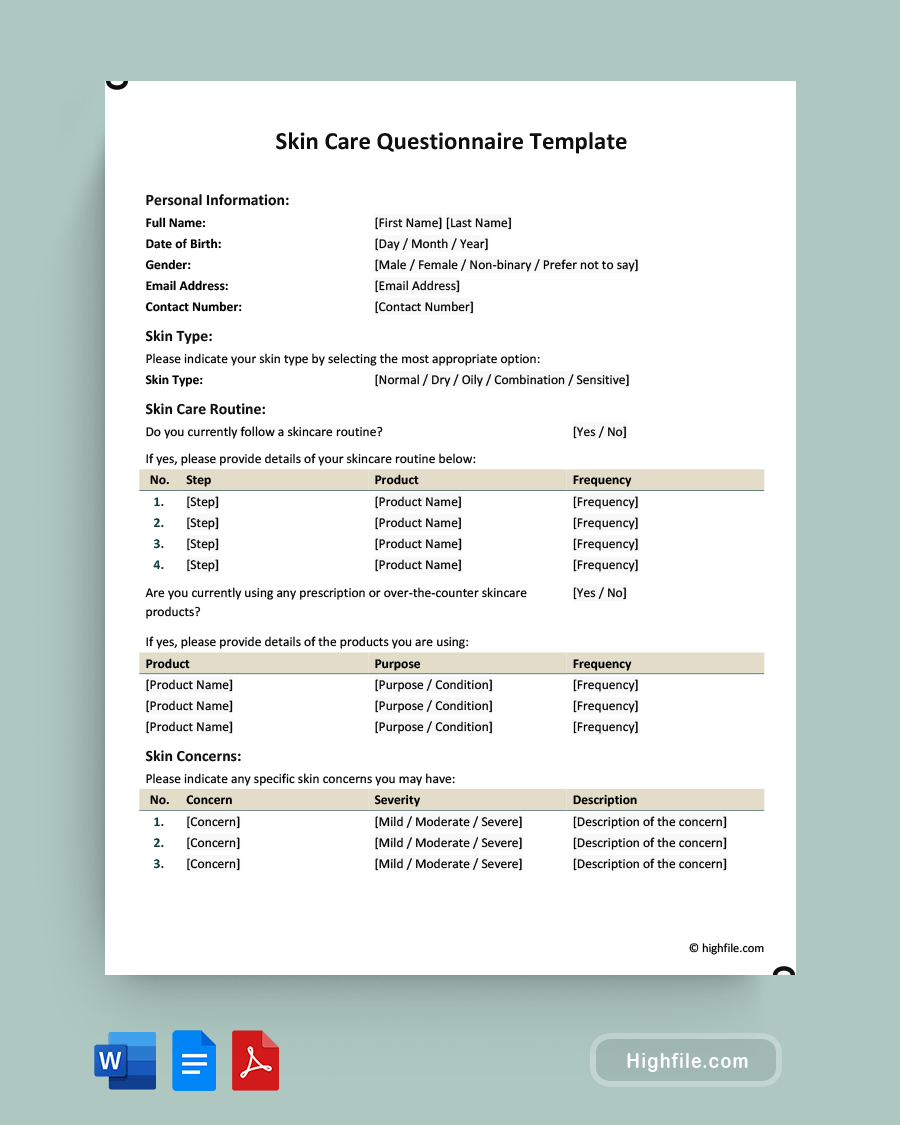There are many jobs and fields that include regular performance reviews. For teachers, these are known by many names, including walkthroughs, learning walks, and teacher observations. Whatever it is called in your area, using a Teacher Observation Form is the most efficient and simple way to ensure you record all the important data you need to collect to make a fair assessment. Our Teacher Observation Form Template is available in many formats like PDF and Docs, and it provides the necessary structured layout to make creating your custom document easy. In this article, we will share everything you need to know to get the most out of your template.
What Is a Teacher Observation Form?
School administrators and evaluators use a teacher observation form to assess and document a teacher’s performance during classroom observations. This form lets you systematically gather data and provide feedback on a teacher’s instructional practices, classroom management, and overall effectiveness. There are various sections and criteria to fill out or write about that help objectively record and evaluate the teacher’s strengths and areas for improvement.
Fun Fact: Teacher observation forms aren’t exactly a new idea. These incredibly useful documents likely evolved from the imperial examination system used in ancient China. Even though many jobs in that era had little to do with teaching as we recognize it today, the tests included an observation of how well the candidate was able to impart knowledge. The ability to teach has always been a valuable commodity.
Why Is Teacher Observation Form Important?
A Teacher Observation Form is important because it helps keep all the important assessment information in one centralized, organized format for easy reference later. Here are the primary reasons you need to use this document for your walkthroughs:
- It can guide professional development efforts and help you support teachers in their growth.
- It facilitates constructive feedback and valuable dialogue between administrators and teachers.
- It helps identify effective teaching practices that can be shared with other educators.
- It provides a structured and consistent approach to evaluating teacher performance in a fair and equal manner.
- It offers an objective assessment of each teacher’s instructional practices and classroom management.
- It identifies their strengths and any areas for improvement that need addressing.
- It promotes accountability and ensures the teachers meet expected standards.
Important Note: A Teacher Observation Form is a great way to encourage open dialogue and collaboration. However, you should not rely solely on one, or even several Teacher Observations when measuring educators’ effectiveness.
Essential Elements of Teacher Observation Form
The teacher observation form is made up of numerous essential elements covering different aspects of teaching. From lesson planning to classroom management, and more, it can assist in identifying areas for improvement or special recognition. Here is what you should see on a professional teacher observation form template:
- Form Title: Listing the title at the top of your document helps identify it easily and prevents confusion.
- Teacher Information: The first section captures basic details about the teacher being observed, such as name, grade level or subject, and years of experience.
- Lesson Observation Details: In the next section, include information about the lesson being observed, such as the subject, objectives, instructional methods, and materials used.
- Classroom Environment Rating Table: This table helps you record your assessments of various aspects of the classroom environment, such as organization, student engagement, discipline, and safety. It uses a basic 1-5 scale where 1 is the worst option, and 5 is outstanding.
- Lesson Observation: The lesson observation section is a blank space for observers to record their observations during the lesson, including instructional strategies, student interactions, and teacher-student rapport.
- Teacher Observation Rating Table: The next table consists of criteria that evaluate the teacher’s performance, like content knowledge, instructional delivery, assessment, and differentiation, using a scale of 1-5.
- Action Plan: This section outlines specific areas for improvement. These are identified during the observation, and you should suggest strategies or resources to support the teacher’s growth.
- Follow-up and Support: Include provisions for follow-up meetings, coaching, or professional development opportunities to assist the teacher in implementing the above action plan effectively.
- Declaration: This final section acknowledges the observation and includes the teacher’s signature and date.
Pro Tip: Specific, detailed, thoughtful observations are the key to teacher observation forms. The more information you collect, the easier it will be to use that data to help improve your school and each individual teacher’s unique tactics.
FAQs
A teacher observation form should be used in a collaborative and supportive manner to foster professional growth. Establishing a positive and non-threatening environment where the focus is on improvement rather than evaluation is vital. Here are some ways to use this form effectively:
· Schedule pre-observation conferences. Discuss the lesson’s objectives, instructional strategies, and areas of focus.
· During the observation, the evaluator should take detailed notes. Make sure to document positive and negative impressions.
· After the observation, conduct a post-observation conference. This helps to provide constructive feedback and encourages honest discourse about the observed practices.
· Work together to develop an action plan that outlines specific steps the teacher can take to enhance their teaching.
· Follow up with support and resources to assist the teacher.
· Encourage ongoing reflection and self-assessment. This type of honest introspection promotes continuous improvement.
A teacher observation form contributes to development in several ways. It contains feedback, observations, recommendations, and an action plan to help aid in making improvements. Additionally, it can help the administration identify effective teaching methods to share with other members of staff. When used properly, it can also offer insight into who should be recognized for outstanding efforts or which teachers need more support.
Typically, teacher observations are conducted multiple times throughout the school year to provide a well-rounded assessment of a teacher’s performance. However, specific observation schedules may differ based on factors such as experience level, teacher tenure, or other relevant needs and requirements. That said, you should complete a Teacher Observation Form every time you do a walkthrough.
A teacher observation form should evaluate criteria that encompass every aspect of teaching and classroom management. It is important to be thorough and cover both hard and soft skills like professionalism, lesson planning, class environment, and rapport with students. For a more detailed breakdown of the specific criteria in each rating table, we recommend downloading our Teacher Observation Form Template.
While the primary purpose of a teacher observation form is for external evaluation, it can also be used as a self-assessment tool. Using a customizable, professional template makes it even easier to adapt the original for a more personal-growth-based strategy. Teachers can reflect on their own instructional practices by reviewing the observation form criteria and rating themselves based on their perceptions and observations. This self-reflection can help identify areas for improvement, but it is essential to supplement self-assessment with external feedback and input from administrators or peers to ensure a comprehensive evaluation.
Key Points
A teacher observation form is a valuable document format used for creating custom teacher observation sheets. These are filled out by administrators to evaluate and improve teaching practices. It provides a structured framework for assessing various aspects of teaching, offers constructive feedback, and supports professional development. Using this form effectively helps teachers enhance their instructional strategies, promote student learning, and contribute to their own continuous growth as educators. Our teacher observation form template can help you craft an effective and efficient document for your next walkthrough.
